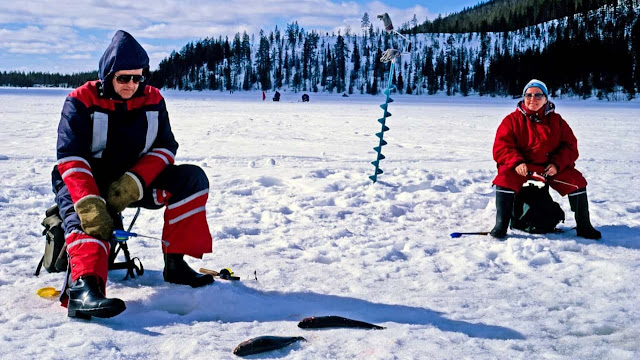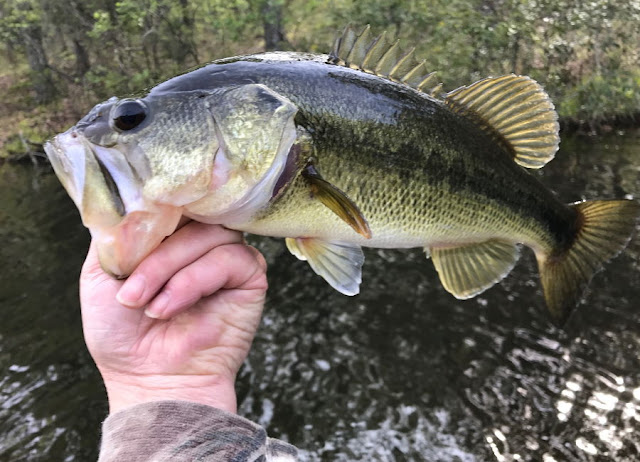Ice Fishing Guide For New Angler
For any ice fisherman, looking for fish is hard work. There is no one technique that guarantees fish every time, but finding the right spot can make all the difference in whether you catch fish or not. Before venturing out on to the ice it's good to know what your looking for when trying to find a fishing hole.
There are several different types of areas to look for when searching for that perfect fishing hole.
These include:
- Open Water Areas – These spots are usually found around the outer edges of a lake, and can be identified by large dark patches in an otherwise white surface. Their are several different kinds of open water areas to keep an eye out for when looking for a spot. One is a channel – these are the paths that fish travel during their migration from deeper water to shallow water as spring approaches, and vice versa as fall turns into winter. Another area is a general depression in the ice - like a bowl or saucer shape. This might be caused by current underneath the ice, wind direction changes over time, or an irregular formation on the bottom of the lake, such as a rock pile. Lastly, and probably most importantly – large schools of shiners can be found in open water areas. Shiner schools are called that because they travel in large groups and gather around objects (sometimes right under your feet!).
- Exposed Lake Bed – Another place to check for fish is by looking at rocks and other such objects that may be poking through the ice. It can sometimes be hard to decipher what is an object on the lake bottom and what is a rock, but if you find an area where there are several individual dark spots (usually shaped like disks) it's no doubt a rock. These rocks may be camouflaged by snow, but there should be a clear separation between the darker water and the white ice surface. Another type of lake bed to look at is areas where currents come together or areas where wind change directions. These currents will often move up and down the shore, creating bubbles as it goes (which can sometimes make your hole collapse). Also watch out for areas where the water is moving in a circular motion. As fish follow their food, these might provide an opportunity to get fish over bait.
- A Few Other Notes – There are certain times of year when fish will behave differently, and different ways of catching them. For example, any area with shallow water (up to 6 feet) is a great place to start as it will warm first, attracting baitfish and providing a solid food source for the big boys. Also, going after deep water fish in shallow water areas can be a good plan as well – as schools of shiners often head there to spawn.
As you venture out onto the ice, watching your step is important as well. It may be hard to tell which ice is safe, and which isn't; but remember these properties:
- Ice (in the middle of a lake) that has more than one color (such as black and white) is generally OK to walk on. - Ice with bubbles or air pockets under the surface should be avoided. - Ice that is close to shore and can be snapped by hand is certainly not safe.
- Ice that appears smooth and clear is generally good, but if it's dark in color or has a rough surface, proceed with caution.
Many people go out onto the ice without any gear whatsoever. This isn't the safest thing to do, so if you must go out on the ice without a sled or shanty, be sure to bring a long rope with you. If you fall through, the rope can be tied to trees, rocks, or even another person (if someone else is there) to pull yourself out of the water.
It doesn't take too much gear to go ice fishing – a shanty or a tent, a sled if you have it available, and some kind of shelter from the wind will suffice. Depending on how much time you want to spend outside (and whether or not there is snow) you may also want to bring along extra clothing, wood for starting your fire (if using one), cooking supplies, and anything else you may need.
- A standard shanty should be fine for ice fishing, but there are also specialized models that allow you to fish through the window while remaining mostly enclosed. These provide a little more warmth inside while still allowing you to see your hole in the ice. - Sleds will allow you to pull everything you need behind you and will secure to your shanty as well, making it easier to move around. - A tent is great for keeping your equipment out of the wind and snow, but if there is no snow on the ice (or it's rainy) this becomes much less effective. - Wood stoves are a nice alternative to open fires as they provide extra warmth (when there is fuel) and often come in portable models. - Cooking supplies should include items like stoves, pots, pans, utensils, etc. - Extra clothing should consist of anything that may get wet or lose its insulation, including scarves, hats, coats, socks, boots (including gators), mittens, and much more.
More social:
https://www.bleedinggreennation.com/users/jamesfishing
https://www.bigblueview.com/users/jamesfishing
https://www.minorleagueball.com/users/jamesfishing
https://www.mlbdailydish.com/users/jamesfishing
https://www.faketeams.com/users/jamesfishing
https://www.blogger.com/blog/posts/2091527538821839047
https://www.blogger.com/blog/posts/834381044484037509
https://teepepe.wordpress.com/
https://teepepe.mystrikingly.com/




Nhận xét
Đăng nhận xét